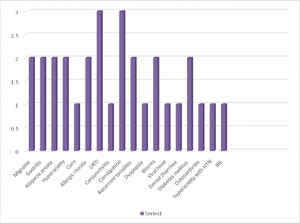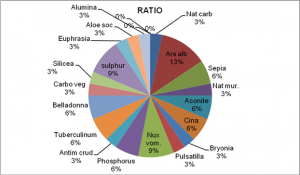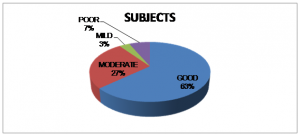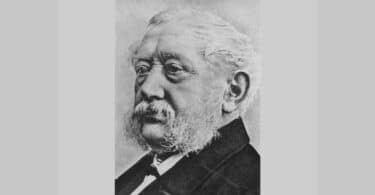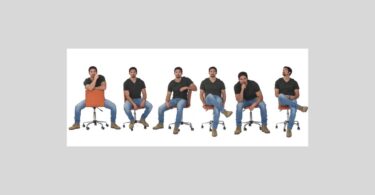ABSTRACT:
The Topic of study was “Importance of Characteristic Symptoms in Prescribing the Simillimum”. The study consisted of two parts, theoretical and practical. The theoretical part was completed by studying, collecting and compiling the data by going through extensive literature regarding various concepts according to the Organon of medicine In the practical part of the study 30 cases were treated according to the various criteria mentioned in the methodology. In the pilot study, I studied only 30 cases which are presented herein. I treated 30 cases and studied all the cases in-depth and advised them on medicines to take. I found that out of 30 cases studied, 19 (66 %) showed good response, 8 cases (28%) showed moderate response, 1 case (3%) mild response and 2 cases (3%) showed poor response. I am gratified with the teachings of our master Dr. Samuel Hahnemann and his stalwarts with their direction to prescribe on characteristic indications and how to understand acute and chronic phases of illness.
Keywords: Characteristic symptoms, Homoeopathy, Individualization.
INTRODUCTION
Often today homoeopathy is practiced using characteristic symptoms, which are the peculiar, unusual and unique ones. These help individualize the case. Master Hahnemann defines them as striking, outstanding, uncommon and peculiar. An example is a sudden rise of temperature after contact with dry icy breeze and with intense mental restlessness and burning unquenchable thirst –Aconitum
MATERIALS AND METHODS
- Clinical Study:
30 cases both acute and chronic including both sexes and different ages have been studied. Case taking was done by using standard case format as per homoeopathic principles
- Case Definition
All cases of any age group and both sexes have been treated by characteristics prescribing.
- Study design:
Minimum 30 cases meeting the case definition of inclusion / exclusion criteria have been studied. Help of guide, researchers, articles of different authors, from various journals and books have been studied.
- Inclusion Criteria:
All the patients fulfilling case definition.
All the participants giving acute and chronic complaints.
Both sexes and all ages
- Exclusion Criteria:
1) The patients not fulfilling case definition.
2) The patients who do not come for follow up.
- Criteria of assessment:
This is decided under FOUR headings:
GOOD– More than75% relief of indications
MODERATE-50-75% relief of indications.
MILD– 25- 50% relief of indications.
POOR– Less than25 % relief of indications.
OBSERVATION AND ANALYSIS
Observation of all the 30 cases which were studied in the period of 1.5 years are explained with support of tables, Pie diagrams and graphs as per requirement
Age wise
Diagnosis wise.
Remedy wise ratio
RESPONSE TO TREATMENT
DISCUSSION
- My topic was “Importance of characteristic symptoms in prescribing the simillimum. My major intention was to understand characteristic symptoms of the case in selection of the simillimum. I included all types of patients in the study. I have tried to find the characteristic symptoms and prescribe the remedy on the basis of such symptoms to reduce the suffering and improve the quality of life of each one. Incidence was highest between the age of 18-45years i.e. followed by 60-70years, i.e. older age group and last, 3-10 years i.e. the child age group. Each accounted for 20,5, 5 cases out of 30 respectively.
- Out of total 30 cases, 19 showed good improvement, 8 cases showed moderate improvement, 1 case showed mild improvement and 2 cases showed poor improvement.
CONCLUSION
- This study shows a noteworthy role for characteristic prescribing in treatment of diseases.
- After conducting the study on 30 patients I have concluded that when the remedy is prescribed after considering the characteristics of the case, the outcome is good.
- During this entire process, I have found that repetition of the drug is necessary in various potencies as per needs of the case.
- While doing the study I found that was able to verify the opinions of various authors regarding prescribing on characteristic symptoms. The goal was to individualize the patient and characteristic prescribing made it easier. Dr. J.T Kent has said – “You cannot individualize except if you have that which characterizes.
- In all the cases, characteristic were used to find the similimum or small set of similar remedies but ultimately totality of indications decided the final selection.
I also observed that characteristics are not only present in chief complaints of patient but can likewise be found in the personal history of the patient.
Treatment based on characteristic indications has much value in management of diseases. The patients in the study showed good improvement under homoeopathic treatment.
BIBLIOGRAPHY/ REFERENCES:
- BOOKS-
- Organon of medicine – by Dr. S. Hahnemann, 6th edition (pg. 217-218, 224), Edition- reprint edition 2004, Total pages- 340 Publisher- B. Jain publisher, New Delhi.
- Principles of Prescribing – by Dr. K. N. Mathur (chapter 5, pg.99-125), Edition- reprint edition-2003, 06, 07, 08, Total pages-671, Publisher- B. Jain publisher, New Delhi.
- Hahnemann’s Organon of Medicine- by Dr. B. K. Sarkar (pg.399-404), Edition-9th revised edition 2003-04, Total pages- 679, Published by- Birla Publication, 1/9185 west Rohtasnagar, Delhi-110032.
- The Genius of Homoeopathy- By Stuart Close (Chapter 11- Symptomatology, Pg. 156-163), Edition- 1st Indian edition 1979, Total pages- 280, Publisher- B. Jain Publisher, New Delhi.
- WEBSITES–
- HOMOEOBOOK.COM
- WHOLEHEALTHNOW.COM
- HOMOEOTIMES.COM
- AUDESAPERE.COM



